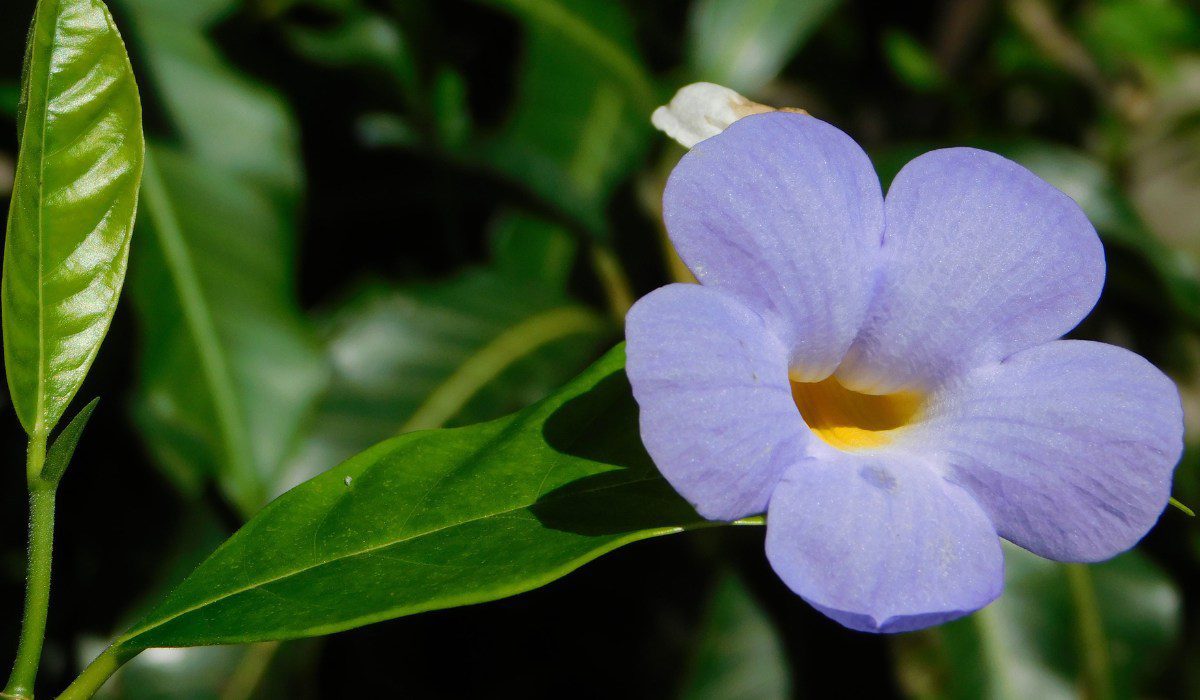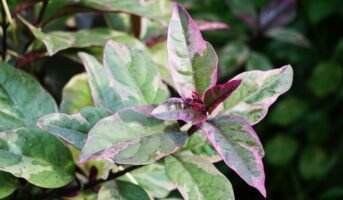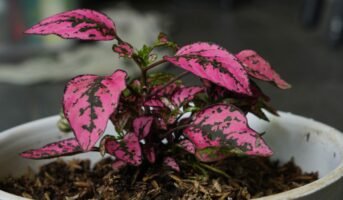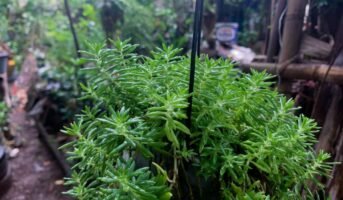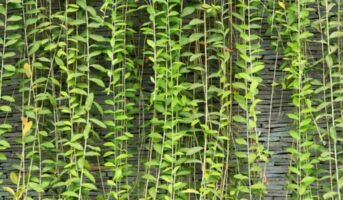What is Thunbergia Erecta?
Thunbergia Erecta, commonly known as Bush Clock Vine, is native to Africa’s tropical region. It is prized for its stunning summertime display of purple blossoms. The amount of pruning this plant receives determines its shape.
If untrimmed, it will grow into a creeping mound; if lightly pruned on a regular basis, it will become a low bushy shrub. It is perfect for planting around patios, piers, or in between border plants. The thick undergrowth is perfect for a low hedge row. Moreover, this plant is non-toxic in nature.
Thunbergia Erecta: Facts
| Common Name | Bush Clock Vine, King’s Mantle, Thunbergia |
| Native | African tropical region |
| Sunlight | Full to partial sun |
| Growth | 4-6 ft tall |
| Colours | Purple |
| Plant light | Full sun to partial shade |
| Bloom Time | Summer |
| Category | Tropical |
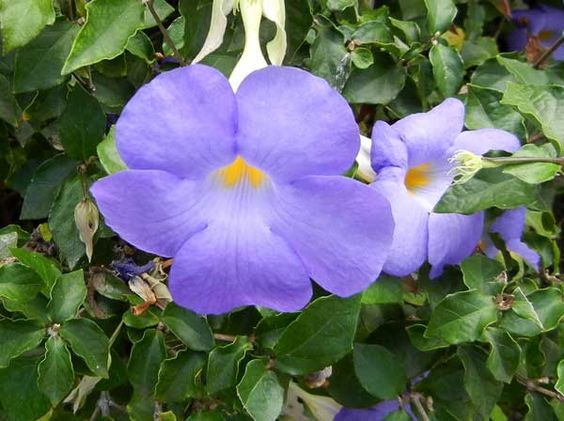
Source: Pinterest
See also: Tips to grow and take care of anthurium
Thunbergia Erecta: How to grow?
- Pick a spot that will let the branches and roots develop naturally. Plants should be placed far enough from walls, decks, and building foundations to prevent the growing foliage from crowding the structure.
- Dig a hole three times as big and as deep as the root ball if you’re planting in the earth. Once the soil has been removed, combine it with some compost or peat moss. By enhancing the soil and aerating the current soil, new roots can easily spread.
- Put the plant in the hole after removing it from its nursery container.
- Backfill the planting area with earth, pushing it tightly around the root ball. When the roots start to flare out from the main stem at the base of the plant, fill the hole until the soil line is right there.
- After giving the plant plenty of water, surround the planting area with a 2″ (5cm) layer of mulch, such as shredded bark. Keep the mulch at least 4″ (10 cm) away from the plant’s trunk since too much moisture can cause the bark to rot.
Thunbergia Erecta: Maintenance
Watering
- Through the first growing season, young plants require weekly irrigation depending on rainfall. It is preferable to completely wet the ground up to 8″ (20 cm) every few days during hot spells as opposed to watering each day sparingly.
- Depending on the weather, plants in containers may need watering more regularly than plants in a garden bed since they can dry up more rapidly. Use your finger to feel the soil’s moisture level. It’s time to water if the top 2-4″ (5-10cm) of the soil is dry or if the plants are starting to wilt.
Fertiliser
- Choose a product with a nutritional balance intended to promote flowering and determine which application technique is most appropriate for the circumstance (such as 5-10-5).
- It’s crucial to follow the instructions on the fertiliser box to decide how much and how frequently to feed plants because too much fertiliser can harm plants.
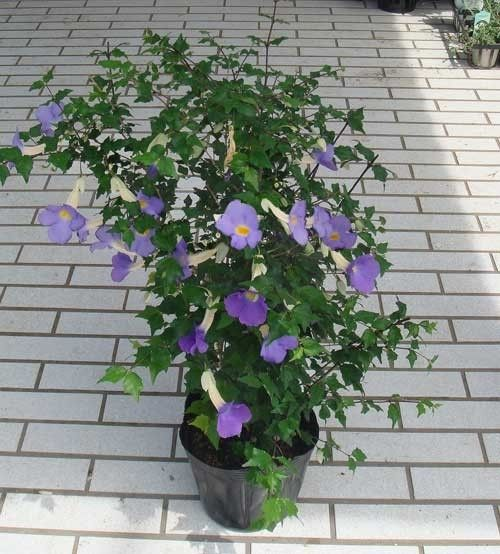
Source: Pinterest
Thunbergia Erecta: Is it an indoor plant?
Although the plant can thrive indoors, it is recommended that it be cultivated in a location that receives adequate and indirect sunlight.
Thunbergia Erecta: Ornamental uses
Thunbergia erecta works well as a backdrop for low-growing plants in a mixed border. It is an excellent shrub for adding a splash of colour to your garden and can be grown in large pots or containers.
It is a lovely ornamental shrub that will work well as a showy garden sample or as an informal hedge and screen. Thunbergia erecta reacts well to pruning and can be shaped into a dense shrub, though this reduces blooming.
See also about: Indoor plants
What are the benefits of Thunbergia Erecta?
In different parts of Bangladesh, this plan has been used as traditional medicine for insomnia, depression and anxiety management. However, this is not yet backed by any scientific research.
FAQs
How do you propagate a bush clock vine?
Pruning the young wood in the spring and planting the cuttings in tiny pots filled with sandy loam or a soilless growing media are the only requirements for the cuttings of these plants. They don't require further assistance, like a rooting hormone, and will root easily. By bending a low-growing branch until it touches the ground, you can proliferate by layering.
Should I prune Thunbergia erecta?
You can trim Thunbergia back to the desired shape and size in the fall or early spring in locations where it grows as a perennial.
Housing News Desk is the news desk of leading online real estate portal, Housing.com. Housing News Desk focuses on a variety of topics such as real estate laws, taxes, current news, property trends, home loans, rentals, décor, green homes, home improvement, etc. The main objective of the news desk, is to cover the real estate sector from the perspective of providing information that is useful to the end-user.
Facebook: https://www.facebook.com/housing.com/
Twitter: https://twitter.com/Housing
Email: [email protected]
